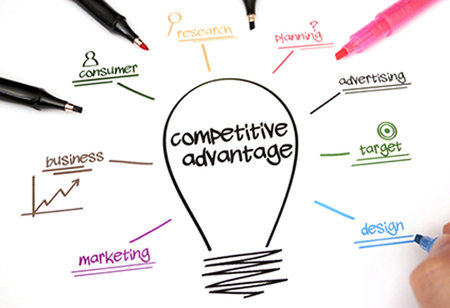Competitive Advantages in Business
Mar 27, 2023
This paper explores the notion of competitive advantages and how businesses can gain a strategic position over their rivals. It will discuss the types of competitive advantages that exist and how they are used to make a business successful. Additionally, it will investigate how firms can create a sustainable advantage over their competitors.
Competitive advantage is defined as an inherent or obtained ability of a firm to outperform its competitors in the marketplace. It is based on leveraging resources and capabilities such as brand name, market positioning, customer loyalty, cost structure, innovation, distribution network and product quality to build long-term profitable relationships with customers. Having this edge can help businesses gain more market share while allowing them to improve efficiency, reduce costs and increase profits.
There are three primary forms of competitive advantage: cost leadership, product differentiation and market segmentation. Cost leadership involves producing goods at a lower cost than competitors and using economies of scale to gain efficiency. Product differentiation focuses on creating unique products or services that are not easily replicated by rivals. Market segmentation is about targeting specific customer groups with tailored offerings in order to build brand loyalty and increase market share.

Creating a sustainable competitive advantage however requires more than just having an edge on the competition; it requires strategic planning, leveraging resources and capabilities, innovation, developing new value propositions, understanding customer needs and preferences, investing in marketing activities and managing risks effectively.
It is important for firms to understand their current position relative to their competitors’ positions in the marketplace as well as the potential opportunities and threats posed by them. This will enable them to identify areas where they can create an edge and gain a competitive advantage. By using market intelligence, firms can monitor competitors’ activities, track customer feedback and trends in order to stay ahead of the competition.
In conclusion, competitive advantage is a valuable asset that businesses must work hard to attain and maintain. It requires thoughtful planning, leveraging resources and capabilities, innovation, marketing strategies as well as understanding customer needs and preferences in order to build sustainable relationships with customers. With a strategic position over their rivals, firms can gain more market share while allowing them to improve efficiency and reduce costs for long-term profitability.
